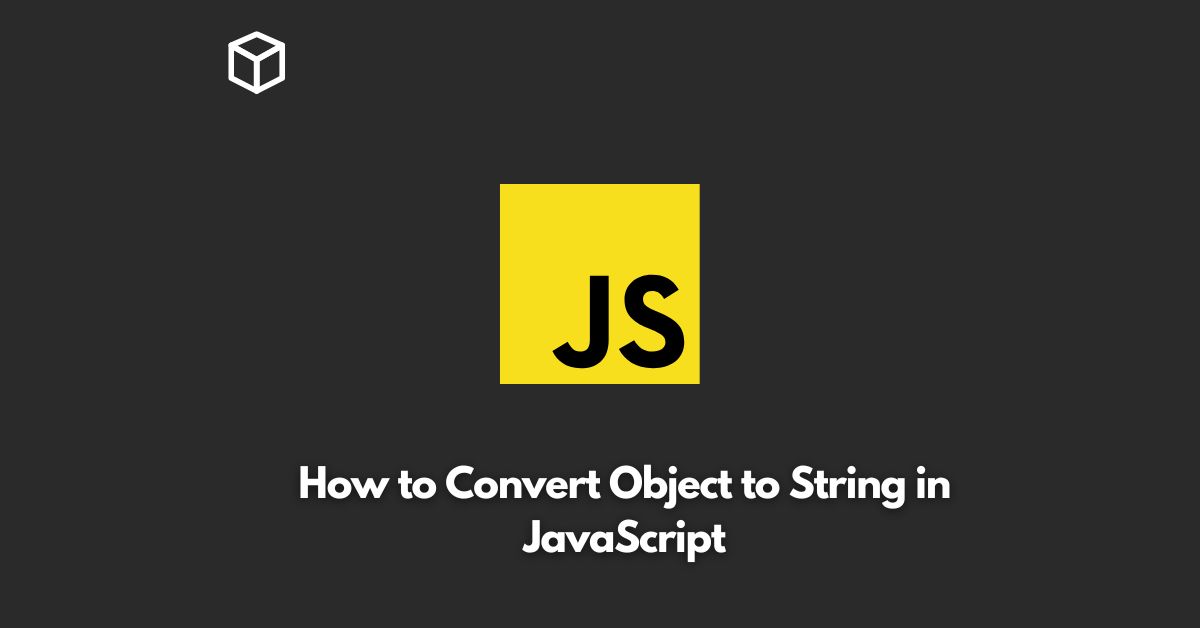In this tutorial, we will be discussing the various ways to convert an object to a string in JavaScript.
The topic of converting objects to strings can be quite confusing for new developers, so we will be explaining the process in a simple and straightforward manner.
This Javascript tutorial will cover the various built-in methods and functions available in JavaScript to convert objects to strings and also provide some code examples to help you understand the process better.
Built-in Methods
JavaScript provides two built-in methods to convert objects to strings, they are JSON.stringify() and toString().
Let’s discuss these methods in detail.
JSON.stringify()
The JSON.stringify() method is used to convert a JavaScript object or value to a JSON string.
The JSON.stringify() method is particularly useful when working with JSON data and APIs, as it allows us to convert JavaScript objects into JSON strings that can be easily transmitted and stored.
Example:
let obj = {name: "John", age: 30};
let jsonString = JSON.stringify(obj);
console.log(jsonString); // Output: {"name":"John","age":30}toString()
The toString() method is used to convert an object to a string representation.
The toString() method is a built-in method of the Object class and is available for all objects in JavaScript.
However, the default implementation of toString() may not provide the desired string representation for all objects, so it’s advisable to override the toString() method to provide a custom string representation for an object.
Example:
let obj = {name: "John", age: 30};
let objString = obj.toString();
console.log(objString); // Output: [object Object]
// Overriding toString() method
let obj = {
name: "John",
age: 30,
toString: function() {
return this.name + " is " + this.age + " years old.";
}
};
let objString = obj.toString();
console.log(objString); // Output: John is 30 years old.Custom Functions
Apart from the built-in methods, you can also create your custom functions to convert objects to strings.
Let’s discuss a few custom functions that can be used to convert objects to strings.
Using the for…in loop
The for…in loop can be used to iterate over the properties of an object and convert it to a string representation.
Example:
let obj = {name: "John", age: 30};
let objString = "";
for (let prop in obj) {
objString += prop + ": " + obj[prop] + ", ";
}
console.log(objString); // Output: name: John, age: 30, Using the Object.entries() method
The Object.entries() method can be used to convert an object to an array of key-value pairs, which can then be converted to a string representation.
Example:
let obj = {name: "John", age: 30};
let objArray = Object.entries(obj);
let objString = "";
for (let i = 0; i ; objArray.length; i++) {
objString += objArray[i][0] + ": " + objArray[i][1] + ", ";
}
console.log(objString); // Output: name: John, age: 30,Conclusion
In conclusion, converting objects to strings in JavaScript can be achieved using the built-in methods like JSON.stringify() and toString() or by using custom functions such as the for…in loop or the Object.entries() method.
Depending on the situation and the desired string representation, you can choose the appropriate method to convert an object to a string.
We hope this tutorial has helped you understand the process of converting objects to strings in JavaScript.
If you have any questions or need further clarification, please leave a comment below.




